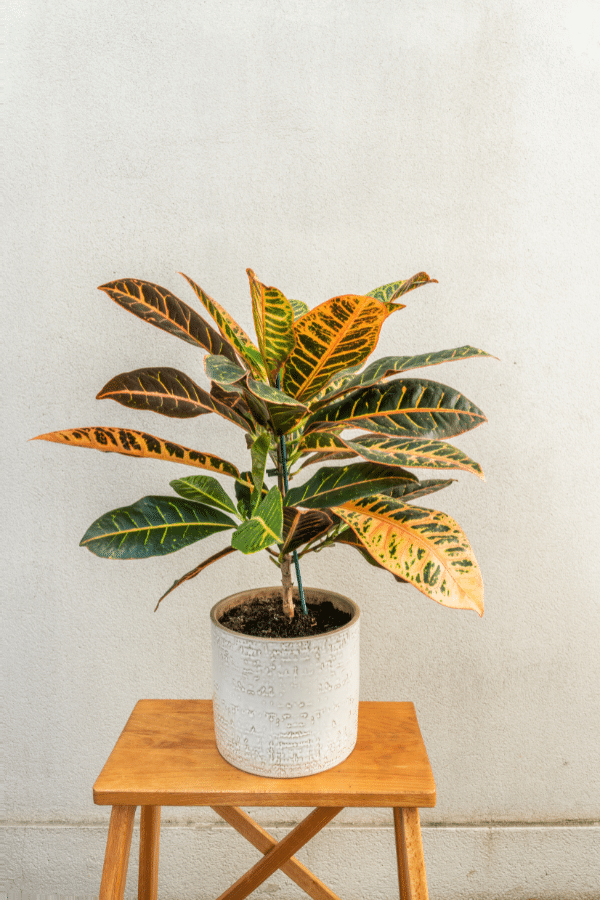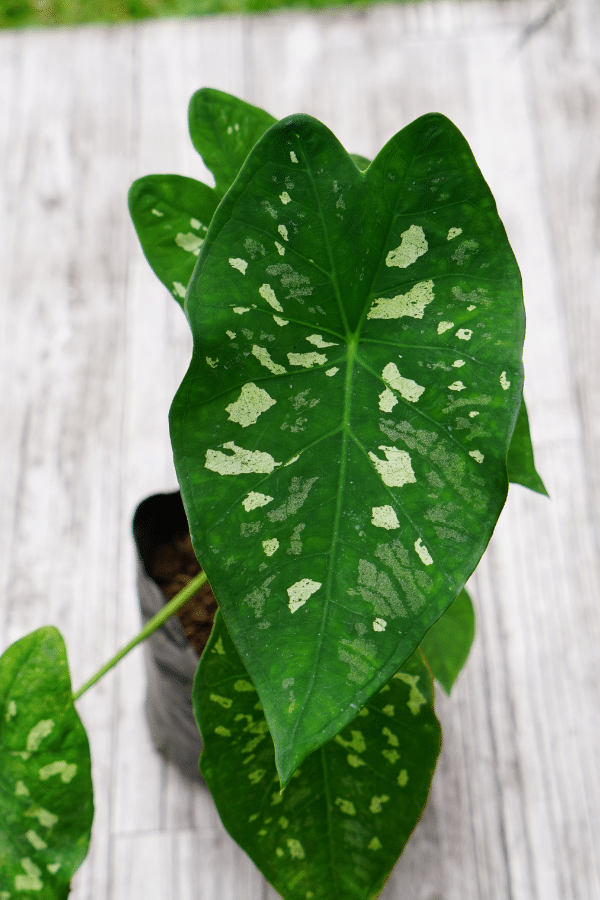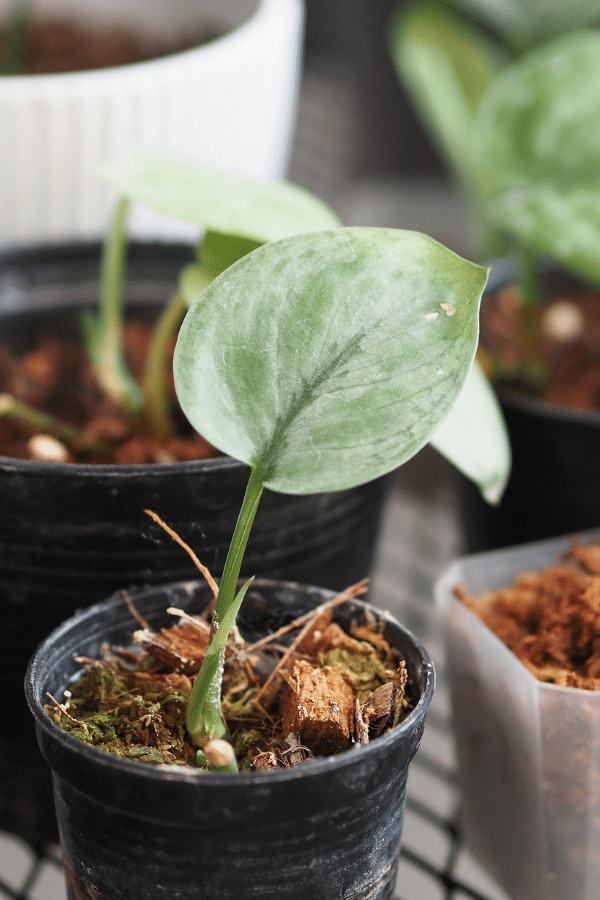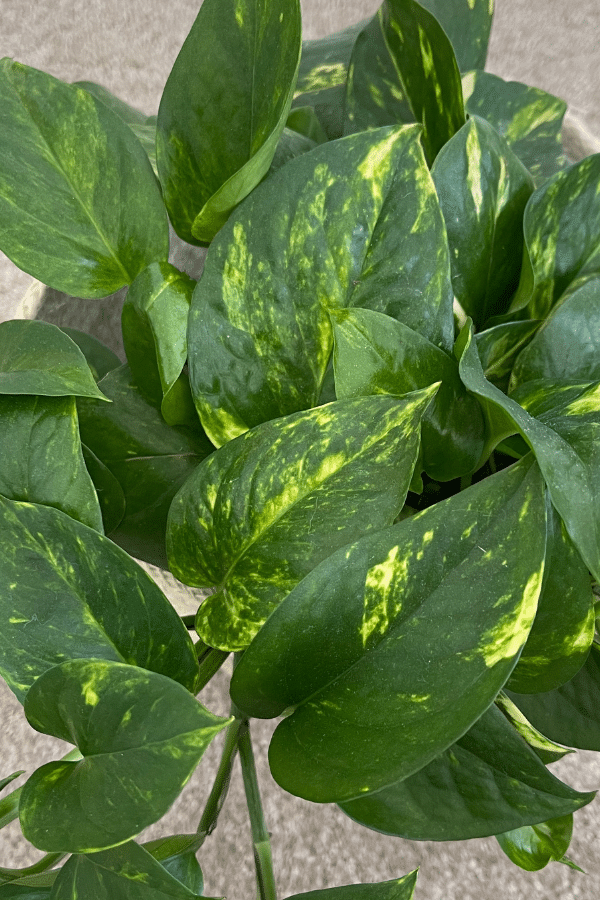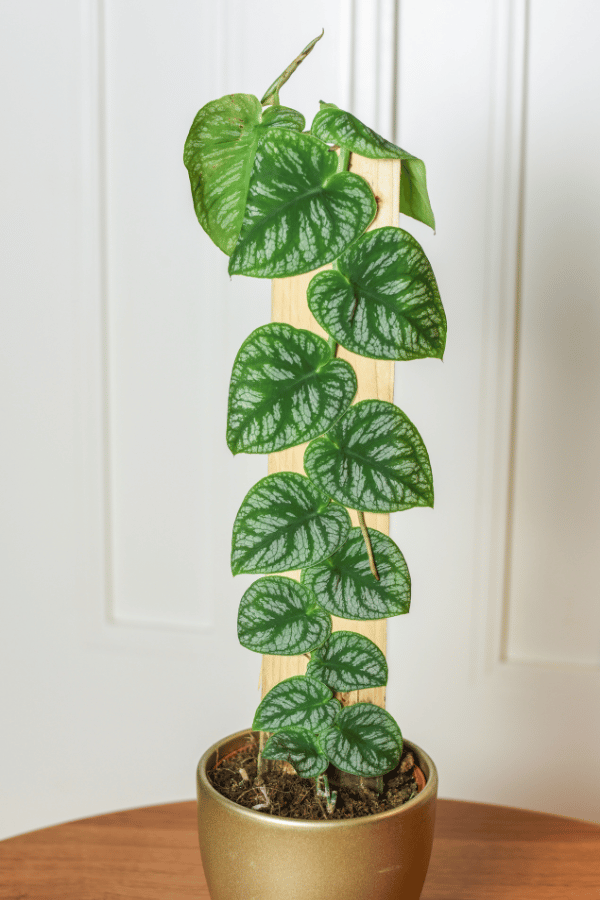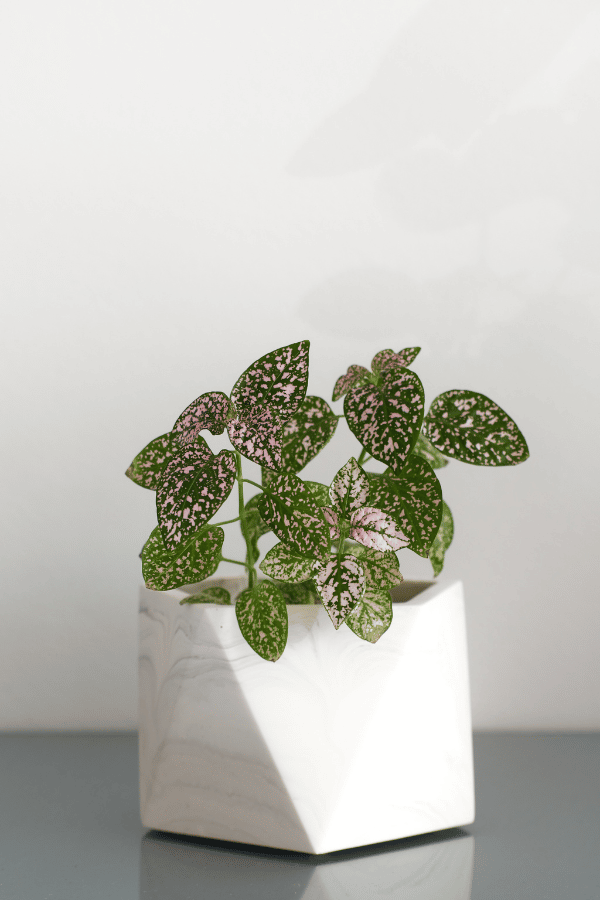Philodendron Soil Guide
Philodendron soil is a type of organic soil that is specifically designed for use with philodendron plants. This type of soil is rich in nutrients and other important elements, such as essential macronutrients and micronutrients. In addition, it also features an optimal pH balance, which helps to ensure that the plant will be able to effectively absorb all of the nutrients from the soil. Furthermore, the soil used for Philodendron plants can provide support for the plant’s root structure, helping it to thrive and grow stronger over time. Altogether, the soil used for Philodendrons is imperative when planting these houseplants.
There are a number of different factors that need to be considered when considering a Philodendron as a houseplant, including the specific conditions of your environment, the type of light, amount of water, humidity, and more. However, one factor that can be overlooked is the type of soil you use to plant your plant. There are a few key features that all successful soils should have. For example, the soil should be fertile and well-drained to ensure adequate levels of nutrients and moisture for your plant. It should also be loose enough to allow for good root development and water retention, but not so dense as to damage or smother the roots of the plant.
After reading this article, you will know all about Philodendron soil and how to mix up your own mixture to provide strength to the plant’s roots and much more.
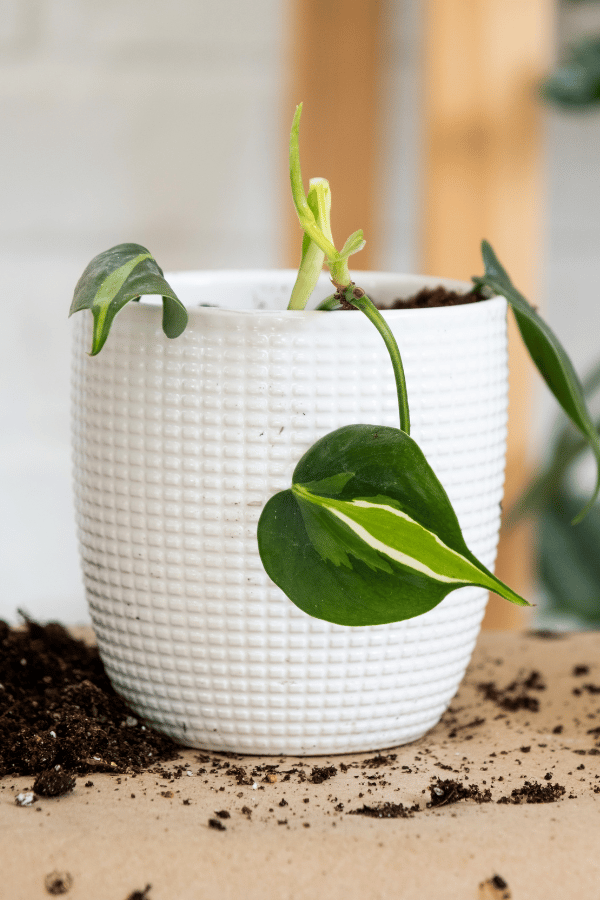
Buying Soil vs Mixing Your Own
It is important to use high-quality soil when potting a Philodendron. Using regular potting soil can lead to poor plant growth and potential problems down the road. Purchasing premium soil or mixing your own ensures the plant will have access to all the necessary nutrients for healthy development. It also helps to regulate moisture levels and provide a good root system.
When picking soil, there are options. There is indoor potting soil, outdoor potting soil, potting mixes, and the choice to buy all of the ingredients separately and mix your own soil.
Outdoor potting soil provides dense and compacted soil, meaning it is not a well-draining soil and for houseplants, this is not the best option as they need well-draining soil. Indoor potting soil provides more aeration and is less dense than its outdoor counterpart, however, it is almost guaranteed to come with fungus gnats and with it still containing soil, it is not the best well-draining.
Potting mixes are a soilless mixture, usually containing a mixture of peat moss, bark, and perlite. Potting mixes will not contain any diseases or fungi, so you can feel safe planting your plants with mixes.
Mixing your own Philodendron soil mix provides several benefits that make it worth the extra effort. First, custom-mixing your soil allows you to tailor the blend specifically to the needs of your plants. Different plants have different requirements for nutrients and drainage, and mixing your own soil makes it easy to cater to those individual needs. Additionally, mixing your own soil gives you control over what products to use and ultimately the quality of your soil. Although it can be a bit more expensive to buy all of the ingredients separately and mix your own, the pros outweigh the cons. Overall, mixing your own soil may require more effort and be a bit more expensive upfront but offers significant benefits for the plant you are potting.
My favorite houseplant soil!
Use code plantinformer for a 10% discount.
Best Ingredients for Philodendron Soil
Peat Moss
While there are many ingredients that can make up a successful Aroid soil, one main ingredient you will want to use is peat moss. Coco coir is a more sustainable option and does much of the same thing as peat moss. This organic material is lightweight and breathable, allowing water and oxygen to easily reach the plant’s roots. You can find peat moss at most garden supply stores and it is affordable. Overall, given its combination of function and affordability, it seems clear that peat moss is the ideal ingredient for nurturing Philodendron plants.
Perlite
Perlite is a lightweight, white mineral that is made from volcanic ash. Its porous structure makes it excellent for root growth and aeration in the soil, helping the plants to get the nutrients they need and simply making them easier to care for overall. In addition, I have found that using perlite in my Philodendron soil supports plant health by preventing water retention and increasing drainage, resulting in fewer instances of disease or root rot. Overall, for its many benefits to plant health, no other ingredient can beat perlite when it comes to growing Philodendrons!
Compost
Compost is rich in beneficial nutrients that help to support plant growth and development. In addition, using compost can help to improve the overall texture of the soil, making it more porous and better able to retain moisture and nutrients. Finally, absorbing nutrients from compost can also help to make plants more resilient in the face of environmental stressors like excess heat or drought conditions. Overall, it is clear that there are many benefits of using compost for Philodendron soil, making this method a great choice for anyone looking to grow healthy, vibrant plants.
Organic Mix
You can make your own organic mix at home using ingredients you may already have on hand. One of the biggest benefits of making your own organic matter mix is that it’s much more cost effective than purchasing a pre-made mix from the store. By using ingredients like peat moss, perlite, and compost, which can often be sourced for a low cost, you can save a significant amount of money. Good drainage is essential for Philodendron plants, as they are susceptible to root rot. An organic potting mix will drain well yet still hold enough moisture to keep your plant healthy. A healthy Philodendron will have bright green leaves. If your plant is starting to have yellow leaves or if growth has slowed, it may be a sign that the soil is lacking in nutrients. By using an organic mix, you can be sure that your plant is getting the nutrients it needs from natural sources.
To make your own organic potting mix for Philodendrons, simply combine one part peat moss or coco coir with one part perlite and one part compost. Be sure to sterilize all of your tools and containers before use to prevent the spread of disease. An organic potting mix is a great option for growing Philodendrons. It’s inexpensive, drains better than potting soil, and is packed with nutrients that will keep your plant healthy and thriving. Plus, it’s easy to make at home using ingredients that you may already have on hand!
Alternative Ingredients for Philodendron Soil
Philodendron is a versatile houseplant that can be grown in a number of different environments, from bright and sunny windowsills to shady corners. The plant thrives in soil that is rich in nutrients, which can be easily provided by using alternative ingredients than listed above. Vermiculite is an excellent alternative ingredient for perlite if you are looking for more moisture retention. Coco coir is a great alternative for peat moss as it’s a more sustainable option and provides essentially the same exact benefits. By using some simple tricks, it is easy to give Philodendron the perfect soil environment for your unique space and how you parent your plants!
Best Soil Recipe for Philodendron
When creating a soil recipe for your Philodendron plants, there are some basic principles that are important to consider. To create the perfect growing environment for Philodendron plants, it is important to use a high-quality soil mixture that is rich in nutrients and is well-draining.
One commonly recommended recipe for achieving these conditions includes peat moss (or coco coir), chunky orchid bark, and perlite. These ingredients are combined in equal proportions, creating a nutrient-rich medium that is capable of providing all of the essential nutrients that Philodendron plants need to thrive. Worm castings, which are a natural soil fertilizer, and horticultural charcoal are also great additives to provide the soil. These helps to bring essential nutrients to the plant as well as hold those nutrients in the soil longer than if the soil weren’t to have any. Overall, this soil recipe strikes the perfect balance between moisture retention, nutrient content, and drainage, making it an ideal choice for growing healthy Philodendron plants.
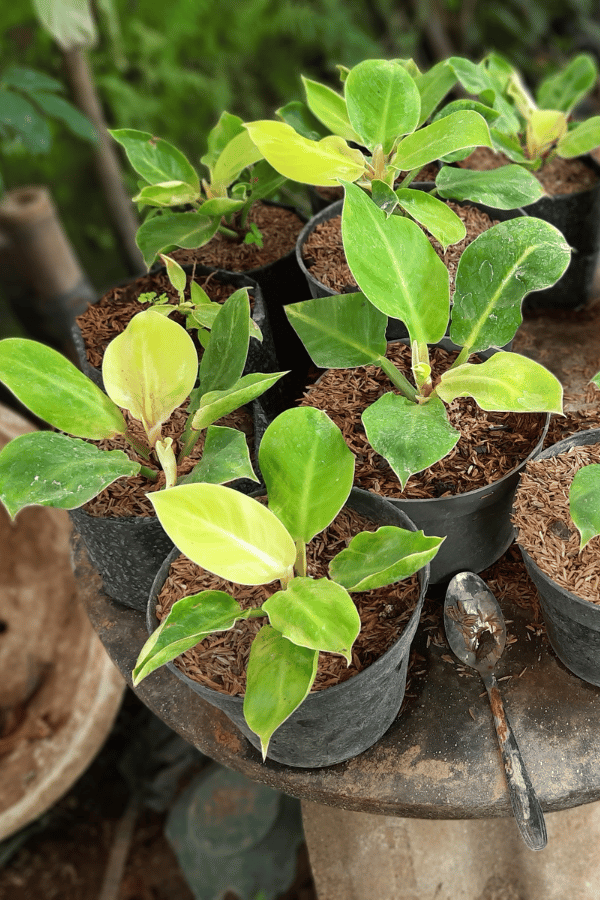
Philodendron Soil Plant Parent Factors
There are mainly two different types of plant parents – the set it and forget it parent and the parent who wants to be caring for my plants every single day. Thinking about what type of plant parent you are will help the plant to thrive and it will help you to understand what soil is best for the plants. If you want to be caring for your plants all of the time, you will want to pick a very chunky mixture for plant soil so it needs more water. If you are a set it and forget it plant parent, soil ingredients that are very moisture retentive will be very beneficial for the soil to not completely dry out in between waterings.
Alternatively, you need to know what living environment you are going to be providing the plants from a temperature standpoint, humidity, and lighting conditions. Be sure to do research on specific Philodendron plants to understand their needs and see if you have a suitable place for them.
Watering Habits
These plants do best when they are watered at least once per week, but it is important to pay attention to the specific environmental conditions of your home or office and adjust your watering schedule accordingly. In general, you should aim to water your plant deeply until its soil becomes moist, but avoid over-watering and keep an eye out for any signs of wilting or drooping that could indicate root rot.
For this reason, it is advisable to check the moisture level of the soil often and adjust your watering habits accordingly. If you notice that the soil tends to quickly dry out between waterings, then you may need to increase the frequency of your watering. Conversely, if you notice that water is pooling at the surface, then you should decrease your watering frequency. Additionally, some leaf varieties are known for having high moisture requirements, so be sure to take this into account as well when selecting a plant for home care. By evaluating and adjusting your watering habits as needed based on your plant’s specific needs and conditions, you can help ensure that your Philodendron receives optimal hydration and nourishment year-round.
Overall, the best way to know how much water your philodendron needs is to monitor it regularly and pay close attention to its overall health and appearance. If you take good care of your plant, it should flourish for many years to come!
Living Environments
While plants are relatively low-maintenance, they still need specific care and attention in order to thrive. Plant parents have to consider the living environments their plants will live in. The top things to consider when creating a space for plants are temperature, humidity, and light.
Most plants prefer room temperatures that range from 65-75 degrees Fahrenheit. If the temperature in your home fluctuates widely or dips below freezing in the winter, it might be best to stick to plants that are known to be more tolerant of colder conditions.
Another important factor to consider is humidity. Most plants like average to high humidity, between 40-60%. If the air in your home is particularly dry (this is common in homes with central heating), there are a number of ways to increase the humidity around your plants. The best way is to invest in a humidifier. Another way is to group your plants together and mist them multiple times a day with water.
Lastly, in order for plants to photosynthesize and produce food for themselves, they need light. The amount of light required by each plant varies depending on the species. Philodendron plants need bright indirect lighting. East, west, or south-facing windows is ideal for Philodendrons. When choosing plants for your home, be sure to take into account the amount of natural light each room gets throughout the day. You can supplement insufficient natural light with grow lights if needed.
Caring for Philodendron After Repotting with Fresh Soil
Location / Placement
When repotting Philodendrons, there are many factors to consider in terms of placement. For example, the plant’s type and size will significantly impact where it should be placed. In general, larger plants should be positioned further away from windows or other sources of heat and light in order to prevent them from becoming overheated or burning. Similarly, plants that require warmer temperatures should generally be kept away from cold drafts and air conditioning ducts. And for any type of plant, it is important to provide adequate space for roots to grow and access to good ventilation within the soil. Overall, when repotting a plant, it is essential to take into account the needs of the individual plant in order to ensure optimal growth and health.
Watering
After repotting your plant with fresh soil, you will need to water it to help the roots establish themselves in their new environment and also to promote the hydration of the soil. There are a few key things to keep in mind when watering newly repotted plants. First, you should use only room-temperature water, as cold or hot water can shock the roots. Secondly, you should be sure to thoroughly saturate all layers of the soil, rather than simply dousing the top surface. Lastly, it is important to avoid overwatering, as this can lead to root rot and other plant health issues. By following these simple steps, you can ensure that your repotted plant receives adequate water and thrives in its new home.


